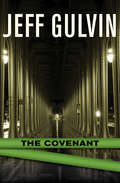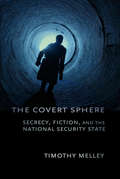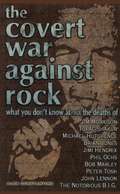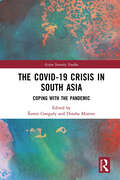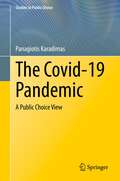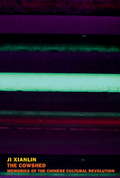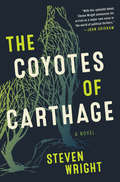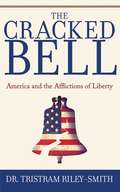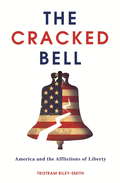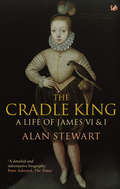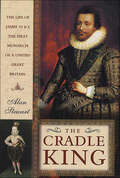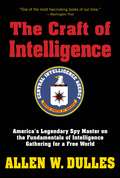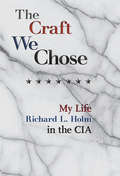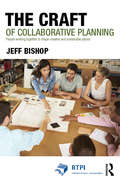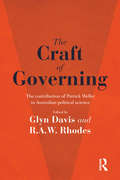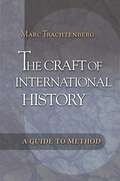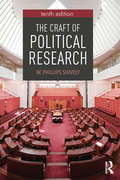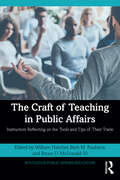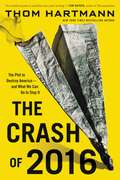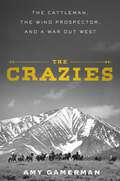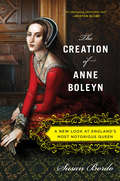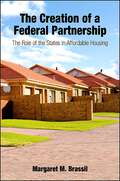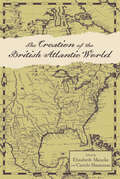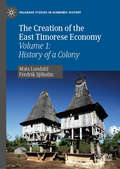- Table View
- List View
The Covenant
by Jeff GulvinThe Scotland Yard Detective and FBI Agent trace a link between an alt-right militia and the CIA&’s hunt for Osama bin Laden in this pre-9/11 thriller. A CIA agent hunts Osama bin Laden in Afghanistan. A female sergeant is assassinated in London. A Japanese terrorist is detonating bombs across Washington, DC And in Texas, a serial killer is murdering transients who ride the rails, until—either by mistake or design—an ill-fated English tourist is counted among the victims. Scotland Yard&’s top anti-terrorism expert, Jack Swann, and his friend, FBI Special Agent Johnny Harrison, are about to find a frightening connection between these seemingly random events. A secessionist militia in America&’s heartland is amassing an army for a coming civil war calculated to divide and destroy the United States. And their next two targets are the only two men who can stop the explosive plan from going off. Written before the events of September 11, The Covenant is a prescient view of international politics, espionage, terrorism, and the rise of the alt-right in the twenty-first century. Jeff Gulvin&’s extensive research and contacts within the FBI and London&’s Special Branch bring unerring authenticity to his Jack Swann novels, Nom de Guerre, and Storm Crow, which New York Times–bestselling author Jack Higgins called &“absolutely marvelous. One of the best thrillers I&’ve read this year.&”
The Covert Sphere: secrecy, fiction, and the national security state
by Timothy MelleyIn December 2010 the U.S. Embassy in Kabul acknowledged that it was providing major funding for thirteen episodes of Eagle Four-a new Afghani television melodrama based loosely on the blockbuster U.S. series 24. According to an embassy spokesperson, Eagle Four was part of a strategy aimed at transforming public suspicion of security forces into something like awed respect. Why would a wartime government spend valuable resources on a melodrama of covert operations? The answer, according to Timothy Melley, is not simply that fiction has real political effects but that, since the Cold War, fiction has become integral to the growth of national security as a concept and a transformation of democracy. In The Covert Sphere, Melley links this cultural shift to the birth of the national security state in 1947. As the United States developed a vast infrastructure of clandestine organizations, it shielded policy from the public sphere and gave rise to a new cultural imaginary, "the covert sphere." One of the surprising consequences of state secrecy is that citizens must rely substantially on fiction to "know," or imagine, their nation's foreign policy. The potent combination of institutional secrecy and public fascination with the secret work of the state was instrumental in fostering the culture of suspicion and uncertainty that has plagued American society ever since-and, Melley argues, that would eventually find its fullest expression in postmodernism. The Covert Sphere traces these consequences from the Korean War through the War on Terror, examining how a regime of psychological operations and covert action has made the conflation of reality and fiction a central feature of both U.S. foreign policy and American culture. Melley interweaves Cold War history with political theory and original readings of films, television dramas, and popular entertainments-from The Manchurian Candidate through 24-as well as influential writing by Margaret Atwood, Robert Coover, Don DeLillo, Joan Didion, E. L. Doctorow, Michael Herr, Denis Johnson, Norman Mailer, Tim O'Brien, and many others.
The Covert War Against Rock
by Alex ConstantineThe connections between government, organized crime, and the music industry are examined, offering compelling evidence that there may be more to the deaths of important popular musicians than has been commonly told.
The Covid-19 Crisis in South Asia: Coping with the Pandemic (Asian Security Studies)
by Šumit GangulyThis edited book provides a range of perspectives on the handling of particular aspects of the Covid-19 pandemic across the principal states of South Asia. As the first academic volume to deal with the COVID-19 pandemic in South Asia, it examines such issues as how India has dealt with the fallout of the pandemic on its substantial diaspora in the Middle East; the competitive Sino-Indian vaccine diplomacy strategies in Bangladesh; Nepal’s attempts to cope with the pandemic in light of its limited health infrastructure; Sri Lanka’s differential treatment of its population based upon ethnic preferences; and how Pakistan’s civil-military relations shaped its handling of the pandemic. The Introduction and the first section summarize the responses to the pandemic made by each principal state in the region. These chapters assess the process of decision-making within each state, with special attention placed on identifying and analzying the actors involved. The Covid-19 pandemic is also reshaping international relations of the subcontinent and the pandemic has laid bare several new cross-border challenges and opportunities that states will have to contend with in the future. The book also considers five of the most pressing issue areas. First, it considers how diaspora communities in the Gulf were affected by the pandemic, and what lessons South Asian sending states can take from protecting their citizens in the future. Second, the Covid-19 pandemic will affect how countries engage in status politics, shaping which countries will be able to lead in regional relations. Third, the Covid-19 pandemic is likely to affect prospects for regional cooperation, both for dealing with the current pandemic as well as future crises. Fourth, it will shape how South Asian states engage in global governance. Fifth, South Asian states may revisit their relations with China in light of the pandemic. This book will be of much interest to students of South Asian politics, human security and international relations.
The Covid-19 Pandemic: A Public Choice View (Studies in Public Choice #42)
by Panagiotis KaradimasThis monograph evaluates public policy responses to the Covid-19 pandemic through a public choice lens. The book compares two prominent, albeit mutually exclusive, theories in social sciences—public interest theory and public choice theory—and explores how their predictions perform within the framework of the Covid-19 pandemic. The chapters present different pandemic policies alongside empirical data in order to draw conclusions about their efficacy, and, in turn, draw conclusions about the veracity of each theory. By the end of the volume, the reader will be able to draw their own conclusions about whether the pandemic policy responses served the public interest, as public interest theory suggests, or the personal interests of the politicians who implemented them, as public choice theory holds.
The Cowshed
by Chenxing Jiang Zha Jianying Ji XianlinThe Chinese Cultural Revolution began in 1966 and led to a ten-year-long reign of Maoist terror throughout China, in which millions died or were sent to labor camps in the country or subjected to other forms of extreme discipline and humiliation. Ji Xianlin was one of them. The Cowshed is Ji's harrowing account of his imprisonment in 1968 on the campus of Peking University and his subsequent disillusionment with the cult of Mao. As the campus spirals into a political frenzy, Ji, a professor of Eastern languages, is persecuted by lecturers and students from his own department. His home is raided, his most treasured possessions are destroyed, and Ji himself must endure hours of humiliation at brutal "struggle sessions." He is forced to construct a cowshed (a makeshift prison for intellectuals who were labeled class enemies) in which he is then housed with other former colleagues. His eyewitness account of this excruciating experience is full of sharp irony, empathy, and remarkable insights into a central event in Chinese history.In contemporary China, the Cultural Revolution remains a delicate topic, little discussed, but if a Chinese citizen has read one book on the subject, it is likely to be Ji's memoir. When The Cowshed was published in China in 1998, it quickly became a bestseller. The Cultural Revolution had nearly disappeared from the collective memory. Prominent intellectuals rarely spoke openly about the revolution, and books on the subject were almost nonexistent. By the time of Ji's death in 2009, little had changed, and despite its popularity, The Cowshed remains one of the only testimonies of its kind. As Zha Jianying writes in the introduction, "The book has sold well and stayed in print. But authorities also quietly took steps to restrict public discussion of the memoir, as its subject continues to be treated as sensitive. The present English edition, skillfully translated by Chenxin Jiang, is hence a welcome, valuable addition to the small body of work in this genre. It makes an important contribution to our understanding of that period."
The Coyotes of Carthage: A Novel
by Steven Wright“With this splendid debut, Steven Wright announces his arrival as a major new voice in the world of political thrillers. I enjoyed it immensely.” —John GrishamA blistering and thrilling debut—a biting exploration of American politics, set in a small South Carolina town, about a political operative running a dark money campaign for his corporate clientsDre Ross has one more shot. Despite being a successful political consultant, his aggressive tactics have put him on thin ice with his boss, Mrs. Fitz, who plucked him from juvenile incarceration and mentored his career. She exiles him to the backwoods of South Carolina with $250,000 of dark money to introduce a ballot initiative on behalf of a mining company. The goal: to manipulate the locals into voting to sell their pristine public land to the highest bidder.Dre arrives in God-fearing, flag-waving Carthage County, with only Mrs. Fitz’s well-meaning yet naïve grandson Brendan as his team. Dre, an African-American outsider, can’t be the one to collect the signatures needed to get on the ballot. So he hires a blue-collar couple, Tyler Lee and his pious wife, Chalene, to act as the initiative’s public face.Under Dre’s cynical direction, a land grab is disguised as a righteous fight for faith and liberty. As lines are crossed and lives ruined, Dre’s increasingly cutthroat campaign threatens the very soul of Carthage County and perhaps the last remnants of his own humanity.A piercing portrait of our fragile democracy and one man’s unraveling, The Coyotes of Carthage paints a disturbingly real portrait of the American experiment in action.
The Cracked Bell
by Tristram Riley-SmithThe twin concepts of liberty and the free market have been instrumental in shaping American identity. Here, author Tristram Riley-Smith delves into how the perverting of these concepts has led to today's economic crisis and identity crisis for America. Including President Obama's election and initial stimulus package, Riley-Smith takes us on a whirlwind examination of America. For three years, he served in the British Embassy in Washington, D.C. and traveled through-out the country and this outsider's perspective offers an in-depth look at the state of American culture after 9/11 and Hurricane Katrina, toxic debts, and the credit crunch. With lively, insightful commentary, careful research, and illuminating personal anecdotes, Riley-Smith uses images like the cracked liberty bell to explain just where things went wrong, and how we can make them right. He touches upon big issues and examines America's consumer culture, using recognizable icons like Martha Stewart, Giorgio Armani, artist Barbara Kruger, and Wal-Mart. The Cracked Bell is a timely, accessible exploration of the current finan-cial crisis and a hard look at the America of the twenty-first century. It's a delightful, thoughtful, and necessary book that takes the reader headlong into the philosophies, icons, and institutions responsible for America's troubles and what can be done about them.
The Cracked Bell: America And The Afflictions Of Liberty
by Tristram Riley-SmithIn this groundbreaking book, Tristram Riley-Smith charts the cultural landscape of a conflicted America in the opening decade of the 21st Century and addresses two key questions: Why is it that a nation that is so clear about its destiny leaves the world confused about its direction of travel; and why is it that a people intent on the pursuit of happiness appears so unsettled?Delving beneath the chaotic surface of American society, Riley-Smith exposes the enduring fault-lines in the cultural bedrock. In doing so, he offers up a panoramic snapshot of American society, flash-lit by the thunderbolts of '9/11', Hurricane Katrina, the 2008 Credit Crash and the inauguration of President Obama.The Cracked Bell gets to the heart of what it means to live in Obama's America, addressing questions of identity and power, belief and value, liberty and law, innovation and tradition, commerce and consumption, nature and civilization, war and peace.
The Cracked Bell: America and the Afflictions of Liberty
by Tristram Riley-SmithIn this groundbreaking book, Tristram Riley-Smith charts the cultural landscape of a conflicted America in the opening decade of the 21st Century and addresses two key questions: Why is it that a nation that is so clear about its destiny leaves the world confused about its direction of travel; and why is it that a people intent on the pursuit of happiness appears so unsettled?Delving beneath the chaotic surface of American society, Riley-Smith exposes the enduring fault-lines in the cultural bedrock. In doing so, he offers up a panoramic snapshot of American society, flash-lit by the thunderbolts of '9/11', Hurricane Katrina, the 2008 Credit Crash and the inauguration of President Obama.The Cracked Bell gets to the heart of what it means to live in Obama's America, addressing questions of identity and power, belief and value, liberty and law, innovation and tradition, commerce and consumption, nature and civilization, war and peace.
The Cradle King: A Life of James VI & I
by Alan StewartAs the son of Mary Queen of Scots, born into her 'bloody nest', James had the most precarious of childhoods. Even before his birth, his life was threatened: it was rumoured that his father, Henry, had tried to make the pregnant Mary miscarry by forcing her to witness the assassination of her supposed lover, David Riccio. By the time James was one year old, Henry was murdered, possibly with the connivance of Mary; Mary was in exile in England; and James was King of Scotland. By the age of five, he had experienced three different regents as the ancient dynasties of Scotland battled for power and made him a virtual prisoner in Stirling Castle. In fact, James did not set foot outside the confines of Stirling until he was eleven, when he took control of his country. But even with power in his hands, he would never feel safe. For the rest of his life, he would be caught up in bitter struggles between the warring political and religious factions who sought control over his mind and body. Yet James believed passionately in the divine right of kings, as many of his writings testify. He became a seasoned political operator, carefully avoiding controversy, even when his mother Mary was sent to the executioner by Elizabeth I. His caution and politicking won him the English throne on Elizabeth's death in 1603 and he rapidly set about trying to achieve his most ardent ambition: the Union of the two kingdoms. Alan Stewart's impeccably researched new biography makes brilliant use of original sources to bring to life the conversations and the controversies of the Jacobean age. From James's 'inadvised' relationships with a series of favourites and Gentlemen of the Bedchamber to his conflicts with a Parliament which refused to fit its legislation to the Monarch's will, Stewart lucidly untangles the intricacies of James's life. In doing so, he uncovers the extent to which Charles I's downfall was caused by the cracks that appeared in the monarchy during his father's reign.
The Cradle King: The Life of James VI and I, the First Monarch of a United Great Britain
by Alan StewartAs the son of Mary Queen of Scots, born into her 'bloody nest,' James had the most precarious of childhoods. Even before his birth, his life was threatened: it was rumored that his father, Henry, had tried to make the pregnant Mary miscarry by forcing her to witness the assassination of her supposed lover, David Riccio. By the time James was a one-year-old, Henry was murdered, possibly with the connivance of his mother, Mary was in exile in England and he was King of Scotland. By the age of five, he had experienced three different regents as the ancient dynasties of Scotland battled for power and made him a virtual prisoner in Stirling Castle. In fact, James did not set foot outside the confines of Stirling until he was eleven, when he took control of the country. But even with power in his hands, he would never feel safe. For the rest of his life, he could be caught up in bitter struggles between the warring political and religious factions who fought for control over his mind and body.Biographer Alan Stewart reveals all of this and more, in The Cradle King: The Life of James VI and I, the First Monarch of a United Great Britain.
The Craft Of Intelligence
by Allen DullesIf the experts could point to any single book as a starting point for understanding the subject of intelligence from the late twentieth century to today, that single book would be Allen W. Dulles's The Craft of Intelligence. This classic of spycraft is based on Allen Dulles's incomparable experience as a diplomat, international lawyer, and America's premier intelligence officer. Dulles was a high-ranking officer of the CIA's predecessor--the Office of Strategic Services--and was present at the inception of the CIA, where he served eight of his ten years there as director. Here he sums up what he learned about intelligence from nearly a half-century of experience in foreign affairs. In World War II his OSS agents penetrated the German Foreign Office, worked with the anti-Nazi underground resistance, and established contacts that brought about the Nazi military surrender in North Italy. Under his direction the CIA developed both a dedicated corps of specialists and a whole range of new intelligence devices, from the U-2 high-altitude photographic plane to minute electronic listening and transmitting equipment. Dulles reveals much about how intelligence is collected and processed, and how the resulting estimates contribute to the formation of national policy. He discusses methods of surveillance, and the usefulness of defectors from hostile nations. His knowledge of Soviet espionage techniques is unrivaled, and he explains how the Soviet State Security Service recruited operatives and planted "illegals" in foreign countries. He spells out not only the techniques of modern espionage but also the philosophy and role of intelligence in a free society threatened by global conspiracies. Dulles also addresses the Bay of Pigs incident, denying that the 1961 invasion was based on a CIA estimate that a popular Cuban uprising would ensue. This account is enlivened with a wealth of personal anecdotes. It is a book for readers who seek wider understanding of the contribution of intelligence to our national security.
The Craft We Chose: My Life in the CIA
by Timothy Miller Richard L. HolmMany books, fiction and nonfiction alike, purport to probe the inner workings of the U.S. Central Intelligence Agency. Many attempt to create spine-tingling suspense or allege that America's civilian spy operation has run amok and been infested with rogues and criminals. Not that The Craft We Chose lacks suspense, harrowing encounters, or its own share of villains, but this book is different; it is a straightforward, honest, surprisingly captivating memoir by one of the CIA's most well-known and honored career officers. For more than three decades, Richard L. Holm worked in the agency's Directorate of Operations now the National Clandestine Service the component directly responsible for collecting human intelligence. His assignments took him to seven countries on three continents, and his travels added many more destinations. At almost every turn Holm encountered his share of dangerous characters and situations, including one that nearly ended his life before he turned 30. The Craft We Chose is more than a chronicle of those episodes. It also reveals Holm's private life, his roots and family, his courtship and marriage, and his four daughters, whom he affectionately calls his platoon.
The Craft of Collaborative Planning: People working together to shape creative and sustainable places (RTPI Library Series)
by Jeff BishopUnlike books that focus solely on methods, The Craft of Collaborative Planning provides a detailed guide to designing and managing all aspects of the collaborative process, advocating for making collaborative work the norm. Beginning with a discussion of the political and legal context of collaborative practice in UK land use planning systems, The Craft of Collaborative Planning tracks a path through the challenging task of process design and working with various groups and individuals. Taking into account the great need for coherent organizational approaches, Bishop outlines evaluation and learning from the collaborative process for the future. Jeff Bishop brings to his writing an exemplary career focused on bringing various parties together to generate creative and widely supported plans and projects. With its focused discussion of UK engagement practices, and detailed outline for making a better collaborative process, The Craft of Collaborative Planning is an essential read for practitioners and decision-makers seeking to bring communities together with creative solutions to spatial planning, design, and development.
The Craft of Governing: The contribution of Patrick Weller to Australian political science
by Glyn Davis'Bargaining and puzzling; power and thought; dealing and agonising; compromise and commitment. These are two sides of political practitioners whether politician, public servant or campaigner. Understand the interplay and we can, just sometimes, make sense of the real world we seek to interpret.'Patrick Weller's observation comes from half a century of contemplating politics in action. The question of how government works lies at the heart of political science, and it has also been the career focus of this pioneer in the field.The Craft of Governing offers a tribute to the contribution of Patrick Weller to Australian political science, with chapters from leading political commentators including Michelle Grattan, Peter Shergold, Bob Jackson and James Walter. Contributors consider the role of the prime minister, approaches to studying executive government, the continuing significance of senior public servants and the nature of leadership in public bureaucracies. They also reflect on how insights from the study of domestic public policy can be applied to international organisations, challenges faced by Westminster democracies and approaches to political biography.The Craft of Governing is an invaluable resource for readers interested in approaches to studying politics and the development of political science as a discipline.
The Craft of International History: A Guide to Method
by Marc TrachtenbergThis is a practical guide to the historical study of international politics. The focus is on the nuts and bolts of historical research--that is, on how to use original sources, analyze and interpret historical works, and actually write a work of history. Two appendixes provide sources sure to be indispensable for anyone doing research in this area. The book does not simply lay down precepts. It presents examples drawn from the author's more than forty years' experience as a working historian. One important chapter, dealing with America's road to war in 1941, shows in unprecedented detail how an interpretation of a major historical issue can be developed. The aim throughout is to throw open the doors of the workshop so that young scholars, both historians and political scientists, can see the sort of thought processes the historian goes through before he or she puts anything on paper. Filled with valuable examples, this is a book anyone serious about conducting historical research will want to have on the bookshelf.
The Craft of Political Research
by W. Phillips ShivelyThe Craft of Political Research immerses readers not only in how political scientists work but also in how ideas produce research questions and guide the selection of research methods. Emphasizing the internal logic of research methods and the collaborative nature of the research process, this slender text explores the design behind interesting questions, problems in measurement and analysis, and key statistical methods. Brief and inexpensive to include in any course, The Craft of Political Research's elegant explanations inspire a big picture understanding of how political scientists explain political reality and encourage students to create their own inventive, original, and bold research work. Features include: Focuses on the big picture of how good research leads to good theories instead of just what research method to use. Provides concise and accessible coverage of key topics, including the nature of research, research design, sampling, statistical analysis, ethics, and more. Includes detailed examples of classic and contemporary political science research to give students models for their own original research.
The Craft of Teaching in Public Affairs: Instructors Reflecting on the Tools and Tips of Their Trade (Routledge Public Affairs Education)
by Beth M. Rauhaus Bruce D. McDonald III William HatcherThis book explores the art and science of teaching in public affairs programs by asking top instructors to discuss their tools and tips for the trade.Public affairs is a discipline that builds scholarly knowledge but also trains and educates public administrators to improve their careers, organizations, and communities. Instructors in public affairs programs at the university level therefore play a vital role in safeguarding the governing capacity of public bureaucracies and nonprofits, and it is crucial that their teaching is effective. Containing chapters written by award-winning teachers, grounded in first-hand experience and supplemented with education research, this book offers guidance to new and veteran instructors alike on what works (and doesn’t) in public affairs classrooms. Topics covered include teaching at the undergraduate and graduate levels, teaching nontraditional students, promoting inclusivity in the classroom, managing classrooms, teaching effectively online, and defining student success in the classroom, among other themes.This book will be of keen interest to instructors currently teaching courses on public administration, public policy, and nonprofit management, as well as PhD students looking to enhance their teaching skills.
The Crash of 2016
by Thom HartmannThe United States is more vulnerable today than ever before-including during the Great Depression and the Civil War-because the pillars of democracy that once supported a booming middle class have been corrupted, and without them, America teeters on the verge of the next Great Crash.The United States is in the midst of an economic implosion that could make the Great Depression look like child's play. In THE CRASH OF 2016, Thom Hartmann argues that the facade of our once-great United States will soon disintegrate to reveal the rotting core where corporate and billionaire power and greed have replaced democratic infrastructure and governance. Our once-enlightened political and economic systems have been manipulated to ensure the success of only a fraction of the population at the expense of the rest of us.The result is a "for the rich, by the rich" scheme leading to policies that only benefit the highest bidders. Hartmann outlines the destructive forces-planted by Lewis Powell in 1971 and come to fruition with the "Reagan Revolution"-that have looted our nation over the past decade, and how their actions fit into a cycle of American history that lets such forces rise to power every four generations.However, a backlash is now palpable against the "economic royalists"-a term coined by FDR to describe those hoarding power and wealth-including the banksters, oligarchs, and politicians who have plunged our nation into economic chaos and social instability.Although we are in the midst of what could become the most catastrophic economic crash in American History, a way forward is emerging, just as it did in the previous great crashes of the 1760s, 1856, and 1929. The choices we make now will redefine American culture. Before us stands a genuine opportunity to embrace the moral motive over the profit motive-and to rebuild the American economic model that once yielded great success.Thoroughly researched and passionately argued, THE CRASH OF 2016 is not just a roadmap to redemption in post-Crash America, but a critical wake-up call, challenging us to act. Only if the right reforms are enacted and the moral choices are made, can we avert disaster and make our nation whole again.
The Crazies: The Cattleman, the Wind Prospector, and a War Out West
by Amy GamermanA dazzling piece of narrative nonfiction about land lust and the American West, The Crazies tells the story of a wind farm that triggers a 21st century range war between a struggling fifth-generation rancher and the billionaires next door.Most locals in Big Timber, Montana learn to live with the wind. Rick Jarrett sought his fortune in it. Like his pioneer ancestors who staked their claims in the Treasure State, he believed in his right to make a living off the land—and its newest precious resource, million-dollar wind. Trouble was, Jarrett&’s neighbors were some of the wealthiest and most influential men in America, trophy ranchers who&’d come West to enjoy magnificent mountain views, not stare at 500-foot wind turbines. And so began an epic showdown that would pull in an ever-widening cast of larger-than-life characters, including a Texas oil and gas tycoon, a roguish wind prospector, a Crow activist fighting for his tribe&’s rights to the mountains they hold sacred, and an Olympic athlete-turned-attorney whose path to redemption would lead to Jarrett&’s wind farm. A wildly entertaining yarn, the brawl over Crazy Mountain Wind would become a fight over the values that define us as Americans—and a window into how this country actually works. All the while, the most coveted rangeland in the West was being threatened by forces more powerful than anything one man could muster: dwindling snowpack, record drought, raging wildfires. The Crazies is a Western for a warming planet, full of cowboys and billionaires and billionaire cowboys. But it&’s also so much more. It&’s an exquisitely reported, ruggedly beautiful elegy for a vanishing way of life and a bighearted inquiry into how you can love a place so much you risk destroying it.
The Creation of Anne Boleyn: A New Look at England's Most Notorious Queen
by Susan BordoThis illuminating history examines the life and many legends of the 16th century Queen who was executed by her husband, King Henry VIII. Part biography, part cultural history, The Creation of Anne Boleyn is a fascinating reconstruction of Anne&’s life and a revealing look at her afterlife in the popular imagination. Why is her story so compelling? Why has she inspired such extreme reactions? Was she the flaxen-haired martyr of Romantic paintings or the raven-haired seductress of twenty-first-century portrayals? (Answer: neither.) But the most provocative question of all concerns Anne&’s death: How could Henry order the execution of a once beloved wife? Drawing on scholarship and critical analysis, Bordo probes the complexities of one of history&’s most infamous relationships. She then demonstrates how generations of polemicists, biographers, novelists, and filmmakers have imagined and re-imagined Anne: whore, martyr, cautionary tale, proto &“mean girl,&” feminist icon, and everything in between. In The Creation of Anne Boleyn, Bordo steps off the well-trodden paths of Tudoriana to tease out the human being behind the competing mythologies, paintings, and on-screen portrayals.
The Creation of a Federal Partnership: The Role of the States in Affordable Housing (SUNY series in Urban Public Policy)
by Margaret M. BrassilWith the ongoing recession and housing crisis, it has never been more important to understand the federal and state governments' roles in affordable housing. The Creation of a Federal Partnership takes a fresh look at the history of national and state housing policy by examining the role played by state housing agencies since the 1970s. Establishing new ground in the field, this volume discusses how the relationship between the federal and state levels has evolved over time. The result, Margaret M. Brassil argues, is that the federal government's broad policy guidelines allow states to better address their own social issues, an improvement for policy and ultimately for the people it serves.
The Creation of the British Atlantic World (Anglo-America in the Transatlantic World)
by Elizabeth Mancke Carole ShammasWas the British Atlantic shaped more by imperial rivalries or by the actions of subnational groups with a variety of economic, social, and religious agendas? The Creation of the British Atlantic World analyzes the interrelationship between these competing explanations for the development of the British Atlantic by examining migration patterns on both the macro and micro level. It also scrutinizes the roles played by trade, religion, ethnicity, and class in linking Atlantic borders and the increasingly complicated legal, intellectual and emotional relationship between the British sovereign and colonial charterholders.Contributors include Joyce E. Chaplin, John E. Crowley, David Barry Gaspar, April Lee Hatfield, James Horn, Ray A. Kea, Elizabeth Mancke, Philip D. Morgan, William M. Offutt, Robert Olwell, Carole Shammas, Wolfgang Splitter, Mark L. Thompson, Karin Wulf, Avihu Zakai.
The Creation of the East Timorese Economy: Volume 1: History of a Colony (Palgrave Studies in Economic History)
by Mats Lundahl Fredrik SjöholmThis two-volume study explores the economy of East Timor, of which very little has been written since the country gained independence in 2002. Currently, no comprehensive account exists of the economic history of the country. The former cannot be properly understood without a knowledge of the historical process that created the present-day situation. This research monograph is the first book to combine a historical analysis of the creation and development of the economy of East Timor from the earliest times to the present, and an analysis of the main contemporary problems facing the East Timorese economy. Volume I considers East Timor from a chronological perspective, as an occupied country up to the point at which Indonesia leave.This book will appeal to scholars and students of economics, political and social science. It will also be of interest to practitioners in these fields as it focuses on down-to-earth problems that need to be solved for the economy to develop.
